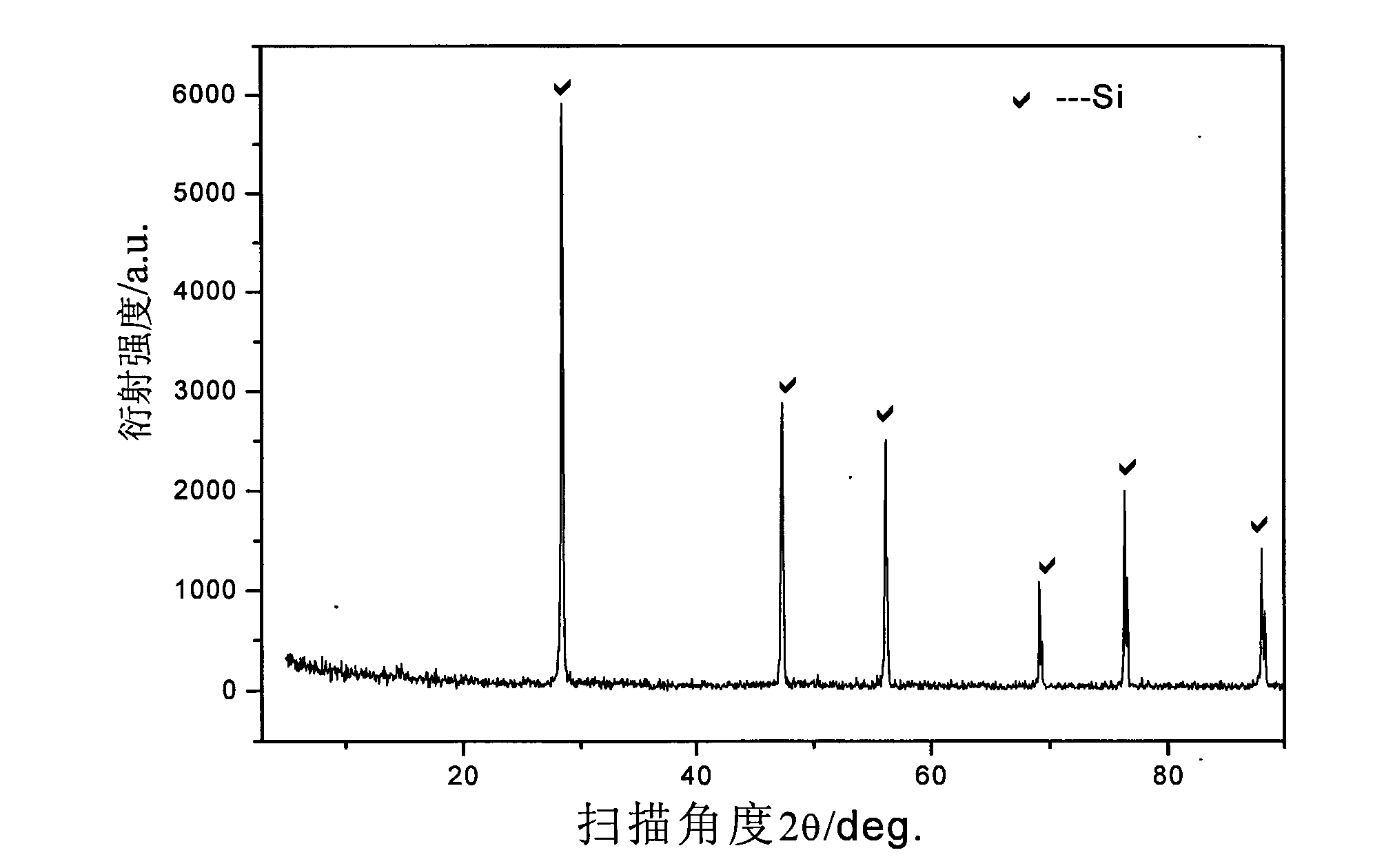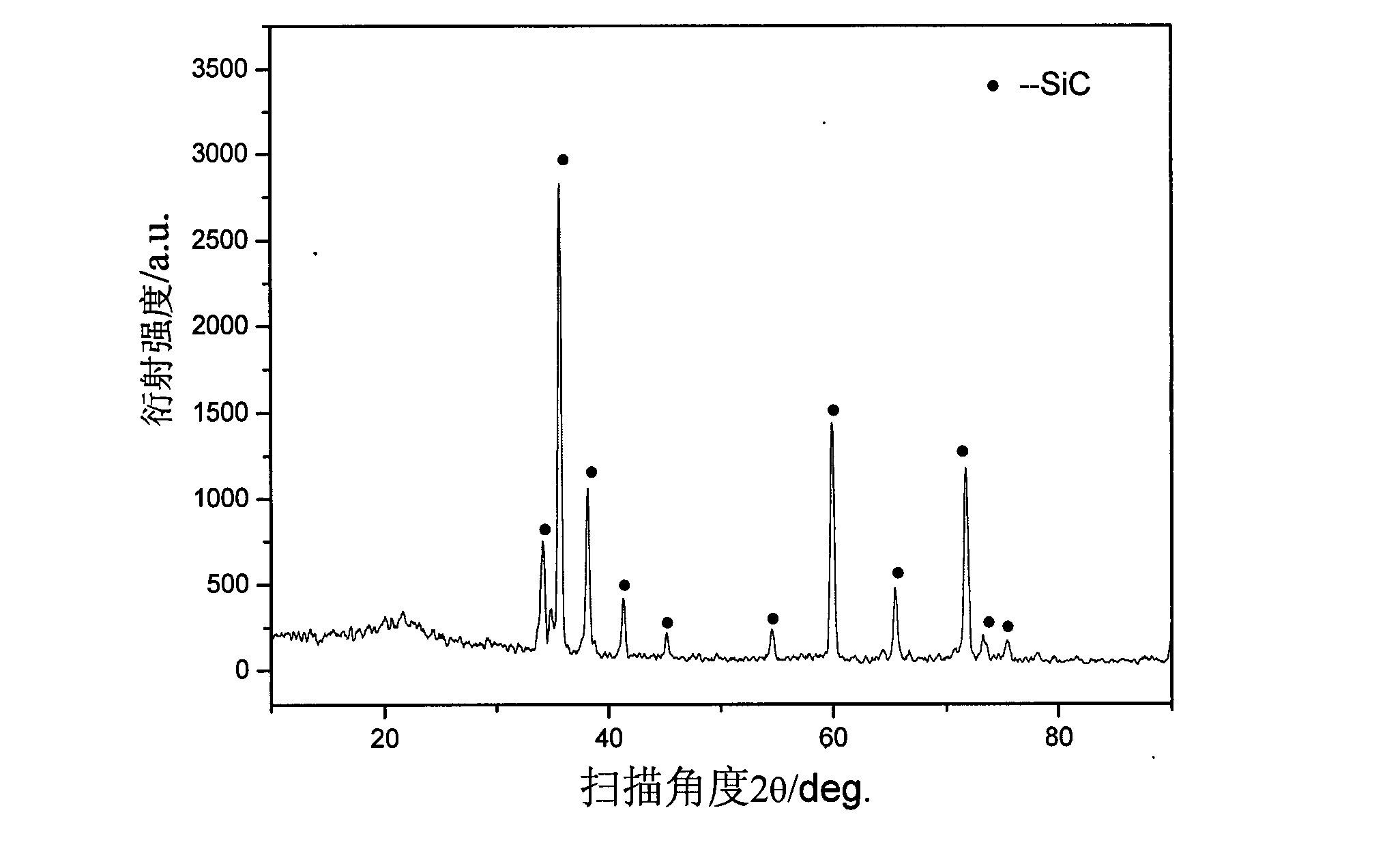Method for recovering solar-grade polysilicon from single crystal silicon/polysilicon cutting slurry
A cutting slurry, solar-grade technology, applied in the field of silicon materials, can solve the problems that silicon cannot reach the 6N purity of solar-grade polysilicon, silicon is not effectively recycled, and silicon is not recycled well, and achieves mature equipment, effective recycling, and improved The effect of utilization
- Summary
- Abstract
- Description
- Claims
- Application Information
AI Technical Summary
Problems solved by technology
Method used
Image
Examples
Embodiment 1
[0032] The process steps for recovering solar grade polysilicon from dicing slurry are as follows.
[0033] (1) slurry drying
[0034] Dry the monocrystalline silicon or polycrystalline silicon cutting slurry in the existing production process in a drying oven at a drying temperature of 75° C. for 1 hour to obtain raw material powder for later use.
[0035] (2) prepare the aqueous solution of polyethylene glycol
[0036] Press water: polyethylene glycol=8.5: 1 mass ratio preparation solution, and in the aqueous solution, add inorganic salt, by mass percentage, the amount of inorganic salt is 0.3% of polyethylene glycol aqueous solution amount, obtains the required physical settlement. The solution. The polyethylene glycol molecular weight adopted is 450, and the inorganic salt used is sodium chloride.
[0037] (3) Physical settlement
[0038] Firstly, carry out primary sedimentation, put the above-mentioned polyethylene glycol aqueous solution into a cylindrical container ...
Embodiment 2
[0055] The process steps for recovering solar grade polysilicon from dicing slurry are as follows.
[0056] (1) slurry drying
[0057] Dry the monocrystalline silicon or polycrystalline silicon cutting slurry in the existing production process in a drying oven at a drying temperature of 80° C. for 0.5 hours to obtain raw material powder for later use.
[0058] (2) prepare the aqueous solution of polyethylene glycol
[0059] Press water: polyethylene glycol=9: 1 mass ratio preparation solution, and in the aqueous solution, add inorganic salt, by mass percentage, the amount of inorganic salt is 0.5% of polyethylene glycol aqueous solution amount, obtains the required physical settlement. The solution. The polyethylene glycol molecular weight adopted is 700, and the inorganic salt used is potassium chloride.
[0060] (3) Physical settlement
[0061] First carry out primary settlement, put the polyethylene glycol aqueous solution into a cylindrical container with a height of 2...
Embodiment 3
[0074] The process steps for recovering solar grade polysilicon from dicing slurry are as follows.
[0075] (1) slurry drying
[0076] Dry the monocrystalline silicon or polycrystalline silicon cutting slurry in the existing production process in a drying oven at a drying temperature of 70° C. for 2 hours to obtain raw material powder for later use.
[0077] (2) prepare the aqueous solution of polyethylene glycol
[0078] Press water: polyethylene glycol=8: 1 mass ratio preparation solution, and in the aqueous solution, add inorganic salt, by mass percentage, the amount of inorganic salt is 0.1% of polyethylene glycol aqueous solution amount, obtains the required physical settlement. The solution. The polyethylene glycol molecular weight adopted is 200, and the inorganic salt used is potassium sulfate.
[0079] (3) Physical settlement
[0080] Firstly, carry out primary sedimentation, put the above-mentioned polyethylene glycol aqueous solution into a cylindrical container...
PUM
 Login to View More
Login to View More Abstract
Description
Claims
Application Information
 Login to View More
Login to View More - R&D
- Intellectual Property
- Life Sciences
- Materials
- Tech Scout
- Unparalleled Data Quality
- Higher Quality Content
- 60% Fewer Hallucinations
Browse by: Latest US Patents, China's latest patents, Technical Efficacy Thesaurus, Application Domain, Technology Topic, Popular Technical Reports.
© 2025 PatSnap. All rights reserved.Legal|Privacy policy|Modern Slavery Act Transparency Statement|Sitemap|About US| Contact US: help@patsnap.com


